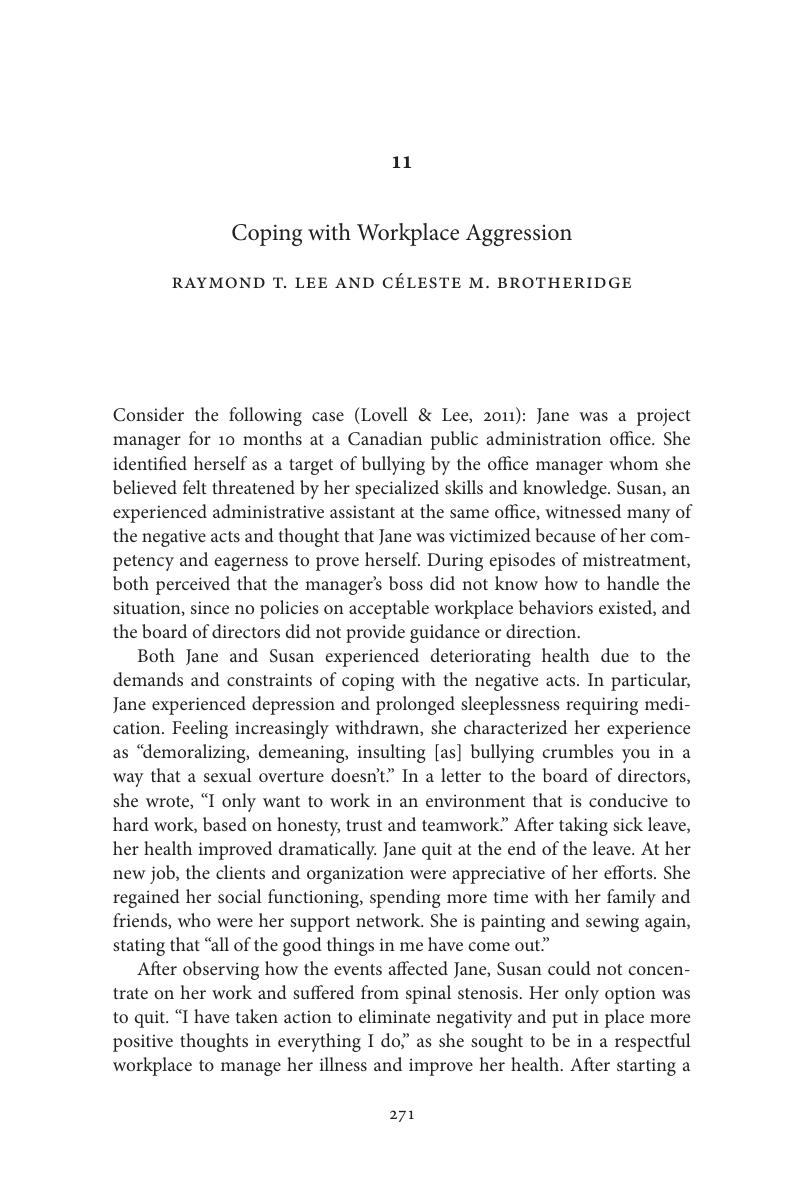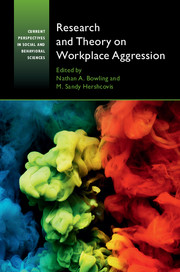Book contents
- Research and Theory on Workplace Aggression
- Research and Theory on Workplace Aggression
- Copyright page
- Dedication
- Contents
- Tables and figures
- Contributors
- Acknowledgments
- Introduction
- Part I The Measurement, Predictors, and Consequences of Workplace Aggression
- Part II The Social Context of Workplace Aggression
- Part III The Prevention of Workplace Aggression
- 11 Coping with Workplace Aggression
- 12 Prospects for Reducing Aggressive Behavior and Other Forms of Counterproductive Work Behavior via Personnel Selection
- 13 Combating Workplace Aggression via Organizational Interventions
- 14 Moving the Field of Workplace Aggression Forward
- Index
- References
11 - Coping with Workplace Aggression
from Part III - The Prevention of Workplace Aggression
Published online by Cambridge University Press: 16 March 2017
- Research and Theory on Workplace Aggression
- Research and Theory on Workplace Aggression
- Copyright page
- Dedication
- Contents
- Tables and figures
- Contributors
- Acknowledgments
- Introduction
- Part I The Measurement, Predictors, and Consequences of Workplace Aggression
- Part II The Social Context of Workplace Aggression
- Part III The Prevention of Workplace Aggression
- 11 Coping with Workplace Aggression
- 12 Prospects for Reducing Aggressive Behavior and Other Forms of Counterproductive Work Behavior via Personnel Selection
- 13 Combating Workplace Aggression via Organizational Interventions
- 14 Moving the Field of Workplace Aggression Forward
- Index
- References
Summary

- Type
- Chapter
- Information
- Research and Theory on Workplace Aggression , pp. 271 - 295Publisher: Cambridge University PressPrint publication year: 2017
References
- 3
- Cited by



